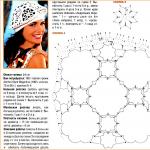How artificial fabrics burn. Synthetic or natural cotton, which is better? How to distinguish cotton fabric from a synthetic fake? Fluffy, soft and black ash
The comfort of a product in sewing and wearing largely depends on fibrous composition threads from which the fabric is made. Unfortunately, the fiber composition of fabrics is not always indicated correctly or is not indicated at all. Therefore, it is important to learn how to determine the fibrous composition yourself.
The fibrous composition can and should be determined by appearance, to the touch and by the nature of combustion. A combustion test is the simplest and most accurate way to determine the fibrous composition of a material. All you need for this is a piece of material, tweezers, a lighter and a saucer.
When conducting a combustion test, we pay attention to the nature of the flame, smell, density and color of the ash.
Next, watch the video or read the text below
More natural plant fibers
Cotton, flax, nettle, hemp... are based on the natural polymer cellulose.
Combustion character:
Burn with an intense yellow flame. After fading, there is a light smoke with the smell of burnt paper. After combustion, a light, fragile gray-white ash remains, which can be easily rubbed with your fingers.
Natural animal fibers
Natural silk is based on a natural polymer, the protein fibroin.
Wool is based on a natural polymer, the protein keratin.
Combustion character:
When brought into the flame they light up, when taken out of the flame they die out. The smell of burnt hair (feather, bone). After combustion, dark, brittle ash remains and can be easily rubbed with your fingers.
Wool has a richer smell of burnt hair than natural silk.
Man-made fibers
Viscose, bamboo - based on natural polymer cellulose
The combustion pattern is similar to cotton:
Burn with an intense yellow flame. After combustion, a fragile ash of gray or dark color remains, which is easily rubbed with your fingers.
Synthetic fibers
When introduced into the flame, nylon melts and ignites with difficulty. If the molten mass begins to drip, combustion stops and a melted ball forms at the end.
Lavsan and nitron burn with a yellow, smoky flame, forming a hard melted ball that does not crumble or grind with great difficulty. A hard melted edge is formed on the edge of the material
Unpleasant smell - burnt plastic
In the video you saw how the most common synthetic materials burn. Perhaps the pieces of fabric that you examine will have a slightly different combustion pattern. This is normal, because fibers are often mixed in different combinations, fabrics undergo a wide variety of finishes, and this all undoubtedly affects the combustion behavior.
By and large, your task is to learn to distinguish between natural materials and synthetic ones. And distinguishing synthetic ones from each other is not so important.
The key to the success of a future product is right choice fabrics.
If you choose a fabric solely based on the criterion “like it or not” and “the color is cheerful”, then it is difficult to count on good result. The color may be cheerful, but how will it be sewn?
To learn how to easily choose fabrics that are easy to sew and comfortable to wear, come to the master class
Today there is a wide variety of materials. They differ in the way the threads are interwoven - warp and weft, the characteristics of the warp used, and processing options. The result is canvases that differ in texture, appearance, and technical and operational characteristics. Many natural materials have been replaced by synthetic ones with improved properties. It is important to be able to understand the compositions in order to use each type of product for its intended purpose.
Based on raw materials, all types of fabrics are divided into:
- Natural - fibers of plant or animal origin are used as a base - cotton, linen, wool, silk. Using different weaves of threads, calico, flannel, poplin, chintz, and waffle fabric are obtained.
- Artificial - produced from organic and inorganic bases - cellulose, protein, glass, metal. These include modal, lurex, viscose, acetate, and fabrics with metallic inclusions.
- Synthetic - created from polymers - polyesters, polyamides, polyvinyls and polypropylenes. They get satin, elastane, lycra.
By combining natural and artificial fibers, many modern materials are produced that combine all the best from the first and second - polycotton, polysatin.
When purchasing canvases from a trusted, reliable place, you can safely trust the label and the words of the seller. Typically, the product you purchase will indicate what fibers it is made from, along with the percentage of each component. In addition, the cost of natural ones is generally higher than synthetic ones. Many unscrupulous sellers offer items made from artificial fibers, passing them off as natural, in order to get more revenue. This is why it is so important to know how to determine the composition of a fabric.
How to distinguish natural fabric from synthetic
There are several ways to help determine the origin of matter. Experienced needlewomen determine the raw materials used by appearance, tactile sensations, and creaseability of the item. A universal method that does not require special skills and knowledge - due to the nature of the flap burning. You should take a small piece and set it on fire; you can determine its naturalness by the flame and smell:
- Plant fibers burn quickly, with a bright fire, and the smell of burnt paper is felt in the process.
- Threads of animal origin burn slowly, without flame, emitting the smell of burnt hair.
- Non-natural materials do not burn, but smolder, after which a solid lump remains instead of ash.
To determine whether the canvas is acetate, dip the flap in a solution with nail polish. The man-made fibers will be destroyed.
The chemical industry produces a large number of chemical fibers used to make clothing and other goods. When degreasing with chlorinated hydrocarbons, some of the fibers may be completely or partially dissolved, such as fibers obtained from vinyl chloride. Some types of products undergo such shrinkage during the degreasing process that they completely lose consumer properties: for example, a size 48 jersey becomes a size 30. Products made from silk acetate may be destroyed during the process by the use of acetone, acetic acid and other reagents. All this caused the need to recognize the fibrous composition of products.
Fibers can be recognized by the nature of their combustion, by their solubility in various solvents, by their dyeability, as well as by their melting point, fluorescence and luminescence.
When examining fibers using a microscope, they are examined both in the longitudinal and transverse directions (transverse sections), comparing those studied with standards.
Despite the fact that there are many fiber recognition methods, most of them are unsuitable for work in factories, as they require a significant investment of time, large samples of the materials being studied, or the use of special equipment.
Express fiber recognition methods applicable to collection points and dry cleaning factories
Recognition of fabric fibers by combustion pattern
The method of recognizing fibers by burning them is the simplest. Using it, you can identify a whole range of fibers quite accurately. When burning fibers in the flame of an alcohol lamp or burner, the nature of combustion is taken into account (a quiet flame or combustion is accompanied by melting), the type of flame (smoking or not), the smell, the type of residue after combustion, and then a conclusion is made about whether the fibers belong to one class or another.
|
Sunbathing |
Character |
Behavior outside the flame |
Smell when burning |
Character |
|
|
Cotton, viscose fiber |
Burn quickly without soot or melting |
Gray ash |
|||
|
Natural silk, wool |
Burn moderately without soot or melting |
Fragile black ball |
|||
|
Acetate |
Burns moderately, without soot, melts |
Vinegar |
Dark brown ball |
||
|
Nylon, nylon |
Burn moderately without soot, melt |
Hard, dark, shiny ball |
|||
|
Burns quickly with soot and melting |
|||||
|
doesn't melt |
Dark, matte, loose ball |
||||
|
Polypropylene |
Burns quickly, without soot, melts |
Non-fragile black ball |
|||
|
with soot and melting |
Fragile black ball |
Recognition of fabric fibers by solubility
Fibers can also be recognized by their solubility in different solvents.
|
Processing sequence |
Solvent |
||
|
dissolve |
Do not dissolve |
||
|
Doorman's Reagent |
Viscose, copper-ammonia |
Acetate, polyester, polyamide, polyvinyl chloride, polyacrylonitrile |
|
|
Acetic acid, glacial, cold |
Acetate |
Polyester, polyamide, polyvinyl chloride, polyacrylonitrile |
|
|
Hydrochloric acid cold |
Nylon, anide (when the solution is diluted with water, a precipitate forms) |
Polyamide (undecane), polyester, polyvinyl chloride, polyacrylonitrile |
|
|
Nitric acid, concentrated cold |
Polyacrylonitrile (nitron) |
Polyamide (undecane), polyester, polyvinyl chloride |
|
|
Concentrated cold sulfuric acid |
Polyamide (undecane), polyester (lavsan) |
Polyvinyl chloride (chlorine) |
|
Recognition of fabric fibers by dyeability
For undyed fibers, it is possible to recognize fibers by their dyeability in a dye mixture. The mixture is prepared by dissolving the following dyes in 1 liter of water, g:
Chloramine orange 1.0
Chloramine yellow 2.0
Diamond Blue FFR extra 1.0
Eosin extra 1.0
Cellitone pink R 0.5
Dispersant 1.0
Celliton pink R is dissolved in water at 50-60° C. The remaining dyes are dissolved at boiling. The fiber sample to be analyzed is placed in a boiling dye solution for 3 minutes. Samples are then selected, washed with cold water and boiled in a bath containing 1 g/L dispersant for 1 min. As a result of dyeing, the fibers obtain the following color:
|
Natural silk |
|
|
Woolen |
Dark purple |
|
Cotton |
Gray-yellow |
|
Casein |
Red-violet |
|
Mercerized cotton |
Bright yellow |
|
Copper-ammonia |
Orange-brown |
|
Acetate |
|
|
Polyamide |
|
|
Polyvinyl chloride |
Colorless |
There are also methods from NITHIB and MIT.
Usually distinguished in the store synthetic fabric from natural it is no more difficult. Just read the composition of the material on the price tag, or ask the seller. Besides, natural fabrics often much more expensive than synthetics. However, there are quite a lot of situations where the composition of the tissue is unknown. How can you find out what the fabric is made of? Read under the cut.
Serious doubts regarding the composition of the fabric may arise if you buy a piece secondhand, or if you discover large deposits of fabric of unknown origin at home. :) Sometimes I doubt the composition of the fabric even in the store. For example, if the cotton feels too silky or stretchy. Or if it doesn't wrinkle at all.
But why is it so scrupulous to find out the true composition of the material? Firstly, to understand whether the price of the fabric you have chosen is adequate. And secondly, many people prefer to wear only natural fabrics. I am one of them. I feel hot in synthetics, but the worst thing is allergic reactions. Of course, there must be an integrated approach, and nutrition, as well as cosmetics, should also be as natural as possible. But clothing can be a big factor in combating unpleasant skin reactions.
In my opinion, with experience, you can learn to identify many fabrics by touch. For example, natural wool has a very recognizable smell, and silk is easy to recognize by touch. But, of course, you can always run into a very well-made synthetic fabric. How to determine the composition of the fabric? For this we need... Matches or a lighter. Yes, yes, we will check the composition of the fabric this old-fashioned way.
For my experiment I selected:
Viscose lining fabric.
Unnamed fabric, synthetic in my opinion.
Unnamed chiffon, similar to synthetics.
Let's start the experiment. General rule for all natural fabrics: the ashes should be ground into powder. The ashes of mixed fabrics cannot be ground into powder; lumps will still remain between your fingers.
How should wool behave?
The wool curls into a ball and emits the smell of burnt lint.
Result: I admit that wool was the most difficult for me. Since almost all wool was added, this slightly changed the reaction of the fabric to ignition. And, as you can see, the ashes were not ground into powder.
Cotton should burn like paper.
Result: a piece of fabric caught fire like paper, the ashes were perfectly ground into powder. Confirming the composition of the cotton was very simple.
The burning silk should “jump” above the match and not emit any odor.
10.03.2017
The composition determines all the properties of the material, and therefore of future clothing. Typically, manufacturers indicate the type and percentage of fibers. But it won’t hurt to know how you can determine the structure of the fabric yourself. After all, it is not always possible to familiarize yourself with the markings, and cases of distortion of information about the material are not excluded.
What determines the composition of a fabric?
Proper determination of fabric composition plays an important role in choosing fabric for sewing. It depends on:
- purpose of the fabric
- cost of material,
- sewing technology,
- choice of style,
- features of care of the finished product.
For clothes intended for summer and winter seasons, daily wearing and holiday occasions are selected different kinds fabrics. Items in contact with skin should contain large amounts natural fibers, provide a pleasant feeling, comfortable conditions for ventilation. Outerwear protects against cold - in this case, the thermal insulation and waterproof properties of the material are important. For everyday products, practicality and wear resistance, etc. are important. Knowing the composition of textiles, you can accurately determine its purpose and choose the optimal style.
All fabrics have certain requirements for sewing technology. The specifics of the cut, the choice of needles, threads, and seams depend on the content of different types of fibers. Accurate information allows you to ensure ease of use and high quality results.
Tactile determination of fabric composition
Information about the composition is placed on the labels. Manufacturers, indicating this data, arrange the types of fibers based on their content in the material, from higher to lower values. For example, this one is 60% wool, 30% cotton and 10% polyester. However, if it is impossible to get acquainted with such information, you can try to determine the type of fabric using tactile sensations:
- silk has tenderness, softness, the hand glides over the surface;
- cotton gives a feeling of warmth, is pleasant to the touch, soft, wrinkles easily;
- linen is much stiffer and creates a feeling of coolness;
- the wool gives a slight tingling sensation, warmth, and practically does not wrinkle;
- viscose has a pleasant shine, is soft, delicate, and wrinkles to the touch;
- Nylon, polyester, nylon have a slippery surface, and the material crumbles when cut.
Determination of composition by combustion
The range of fabrics is huge. Based on tactile sensations, it is difficult to accurately determine the composition, and especially to identify the presence synthetic fibers in mixed versions. The nature of the tissue combustion and the odor emanating from it will help in studying the composition. To determine the type of fiber, you need to pull the thread out of the fabric and set it on fire:
- cotton and linen fibers burn intensely, the flame has a yellowish color, can sparkle, after combustion there remains ash without lumps, which smells like burnt paper;
- the burning of wool and silk is less intense, a ball of dark color remains, when touched it crumbles, the smell of burnt hair is felt;
- the burning of viscose is similar to that observed when burning cotton, but this material burns out much faster;
- When acetate and triacetate fibers burn, a vinegar smell appears, flames yellow color, the resulting lump can be easily crushed with your fingers;
- the lavsan (or polyester) thread burns slowly, soot appears, and a hard ball remains;
- when nylon fibers are set on fire, the smell of sealing wax is felt, white smoke is visible, and a hard dark lump remains;
- polyvinyl chloride thread does not burn, it chars, emitting a chlorine odor;
- Nitron fiber burns in flashes, black soot is released, and a lump remains that can be crushed with your fingers.
Materials can be made from mixed fibers. When burning such filaments, the type of flame and odors depend on the predominant component. It should be taken into account that after burning natural fibers, only ash remains. If there are hard lumps in it, then the fabric contains synthetic impurities.
In order to become more familiar with the behavior of fabrics of different compositions during combustion, we created the section #burn on our YouTube channel. Join us and enjoy watching!)






